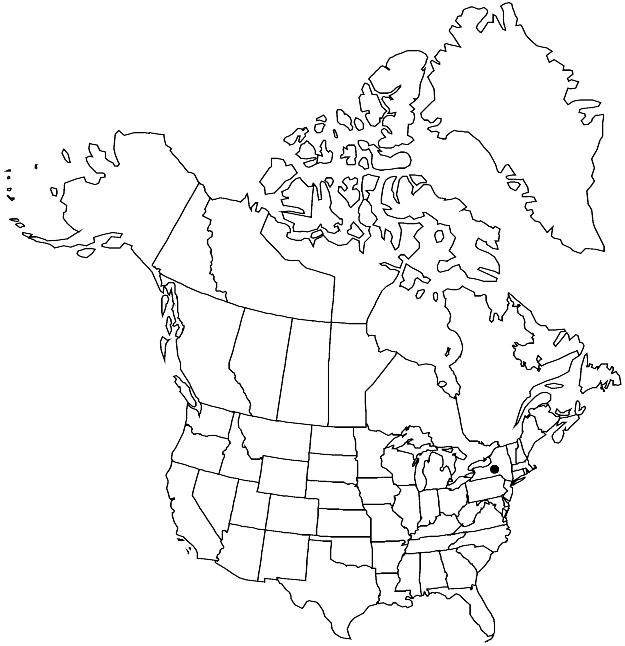Anomodon longifolius
Handb. Skand. Fl. ed. 3, 2: 300. 1838.
Plants somewhat small to large, in thin to thick mats, yellowish green. Stems 2–3(–6) cm, 0.5–1 mm thick when dry, sparingly branched, primary branches prostrate or pendulous; central strand cells well differentiated, smaller; pseudoparaphyllia foliose; rhizoids many distally. Branch leaves appressed to almost recurved when dry, in slender forms julaceous to imbricate when dry, spreading when moist, long-lanceolate, somewhat plicate at base, 2.1–2.8+ mm in robust forms, 0.3–0.5(–0.6) mm in slender forms; base broadly decurrent; margins revolute near shoulder, entire to serrulate, often with shorter and wider cells near apex; apex subulalike, intact; costa strong, percurrent, obscured by laminal cells distally, yellowish, abaxial costa cells often scabrous distally; basal laminal cells not hyaline, smooth, region extending less than 1/4 length of leaf base; medial cells rectangular, 5–13 µm, papilla 1, central, unbranched. Perichaetia on distalmost portions of branches (with minute or flagelliform branches produced distally from inflorescences), leaves with laminal cells smooth near apex. Sporophytes unknown.
Habitat: Crevices between boulders
Elevation: moderate elevations
Distribution

N.Y., Europe, Asia (Azerbaijan, Georgia, Japan, w Siberia).
Discussion
A single collection of Anomodon longifolius from the Adirondack Mountains is the only record for the New World. This species is the only one in the genus with one central papilla on each side of the laminal cells. It is also the only species in the genus, other than A. rugelii, with pseudoparaphyllia. Distinctive characters are the incrassate, isodiametric, irregular or shortly rectangular abaxial costa cells. The stems are fasciculate or irregularly pinnate; the secondary branches are attenuate, flagelliform, and/or frequently club-shaped or recurved at the apices. Although the specimen from New York has no sporophytes, the exostome of A. longifolius is unique in being irregularly striolate, alternating with sometimes finely punctate areas, otherwise smooth distally, sometimes divided into two verruculose-papillose filaments. Anomodon longifolius may be sought on tree bark and ledges, in calcareous regions, shady places, and moist deciduous montane or boreal forests.
Selected References
None.